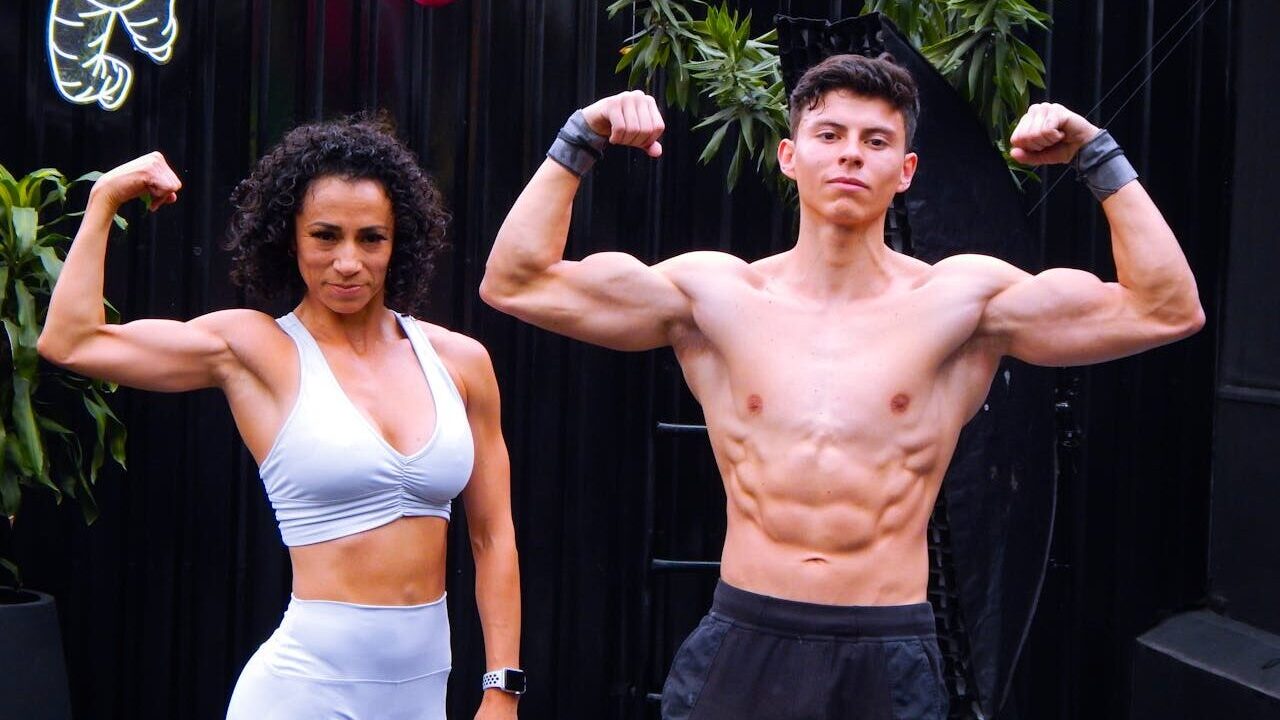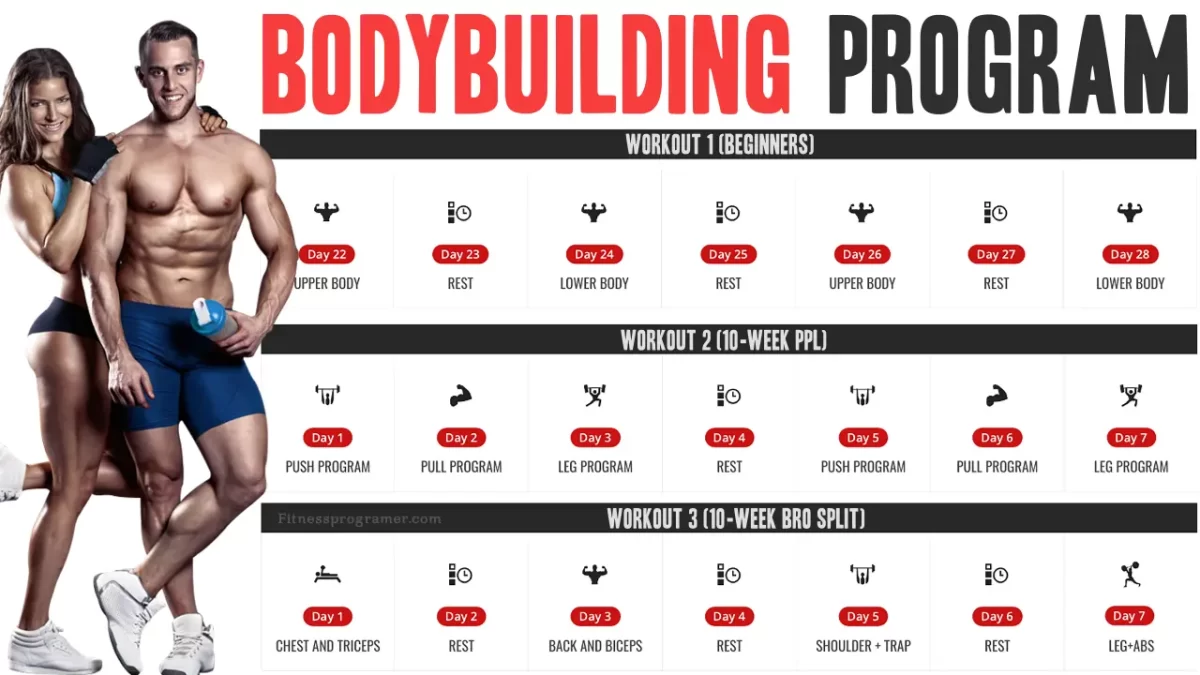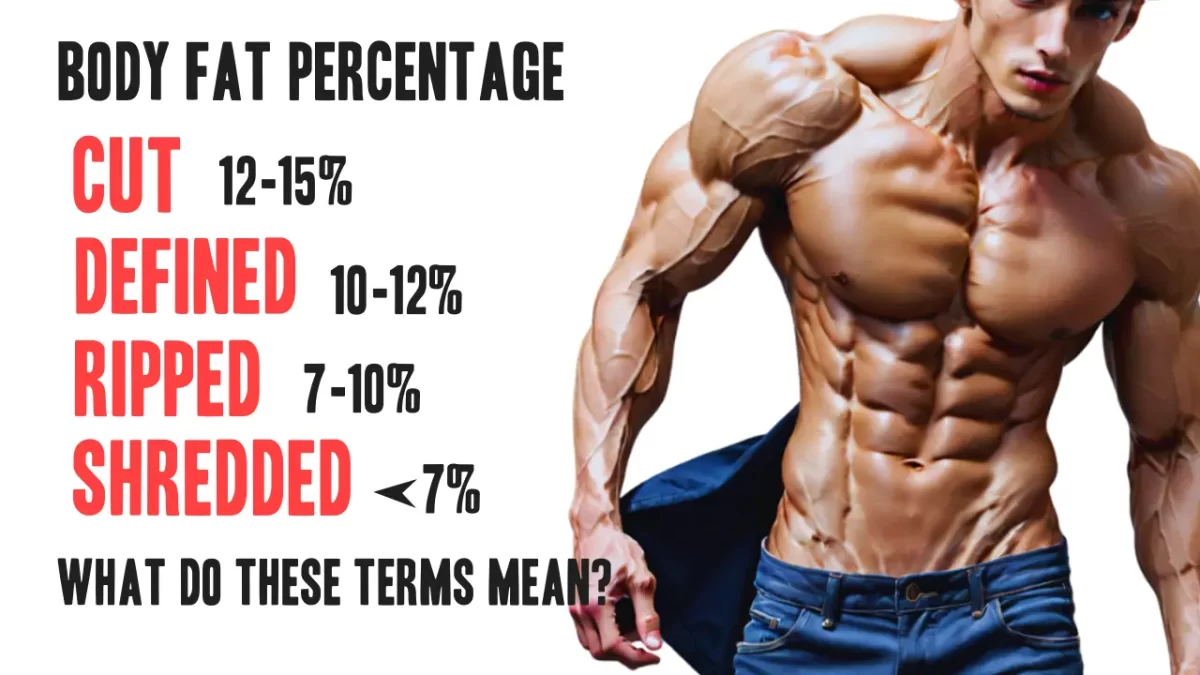Have you ever wondered the difference between bodybuilding and fitness? Both focus on improving your physical health and appearance, but their goals, training methods, and results are different. So which one is suitable for you? Let’s take a closer look at the key differences between these two fields to determine which path best suits your goals and lifestyle.
1. Goal
Bodybuilding: Pursuit of muscle mass
The main goal of bodybuilding is to develop and sculpt muscles and achieve a very defined and symmetrical physique. Bodybuilders train for muscle hypertrophy (growth) and strive to reduce body fat to emphasize muscle definition. Competitions like Mr. Olympia judge athletes based on criteria such as muscle size, proportion, definition, and symmetry.
Fitness: Overall health and functionality

Fitness, on the other hand, focuses on general health, functional strength, endurance, flexibility, and cardiovascular health. The focus is on maintaining overall health, while muscle tone and appearance are often secondary goals. Fitness is about balancing strength, endurance, flexibility, and agility to improve your daily performance and quality of life.
2. Training approach
Bodybuilding: Targeted muscle isolation
Bodybuilders typically follow a split training routine that targets specific muscle groups on different days (chest day, leg day, etc.). The emphasis is on progressive overload, which gradually increases weight and resistance to promote muscle growth. The number of repetitions is usually in the moderate range (6 to 12 repetitions per set), and the exercises focus on isolating muscles and promoting muscle development.
for example:

Fitness: functional and total body training
Fitness training is usually more comprehensive, combining strength training, cardio, flexibility training, and often full-body training. Functional exercises that mimic everyday activities are common, such as squats, deadlifts, and push-ups. The goal is to improve performance in a variety of areas, including strength, endurance, mobility, and agility.

Here are some workouts you can incorporate into your fitness routine.
- morning training
- 3×5 strength training for beginners
- circuit training
- Compound training 3 days a week
- Comprehensive bootcamp training
- 300 workouts for more advanced levels
Although each workout has specific goals, a general fitness routine can be customized to suit your individual goals. It’s often recommended to lift weights two to three days a week and do low- to high-intensity aerobic or other exercise on the remaining days. The fitness routine is flexible so you can train without going to the gym. Learning calisthenics also allows you to design a personalized training program.
3. Nutrition
Bodybuilding: Macro and timing accuracy
Nutrition in bodybuilding is important for building muscle mass while minimizing body fat. Bodybuilders often carefully track their macronutrients (protein, fat, and carbohydrates) and divide their diet into stages of bulking (to gain muscle) and weight loss (to lose fat). Protein intake is especially high to support muscle recovery and growth, and meal timing is often adjusted around training.
Fitness: Balanced and sustainable diet
While nutrition is important in fitness, the approach is often more flexible and sustainable. The emphasis is on a balanced diet that supports overall health, energy levels, and longevity. Fitness diets are typically less strict, focusing on whole foods, portion control, and long-term habits, rather than strict weight-gain and weight-loss cycles.
4. Body composition and appearance
Bodybuilding: Aesthetics above all else
Bodybuilding is characterized by a low body fat percentage and clearly visible muscles. Achieving this physique often requires extreme dedication, including a strict diet and long training sessions. Athletes often go through stages of dehydration in order to look as lean as possible for competition.

Fitness: Look healthier
Fitness enthusiasts typically maintain a more balanced physique with moderate muscle tone and a healthy body fat percentage. Their appearance is often slender, but not as exaggerated or extreme as bodybuilders. A fit body is one that can perform a variety of activities while remaining energized and healthy.
5. Lifestyle and mindset
Bodybuilding: discipline and rigor
Bodybuilding is very regimented and requires strict adherence to diet, training, and often supplements. This lifestyle is demanding and focuses on self-discipline, routine, and sacrifice. Whether competing or not, many bodybuilders adhere to strict protocols throughout the year.
Fitness: flexibility and balance
Fitness tends to focus on long-term sustainability, incorporating flexibility into both diet and exercise routines. Fitness focuses on creating a lifestyle that promotes health without extreme measures, so it doesn’t require much of the strict discipline found in bodybuilding. Fitness training can be tailored to individual needs and often includes variety to keep the process fun.
So which one is suitable for you?
- choose fitness If you want to improve your overall health, feel better and have more energy in your daily activities. For most people, this is a great option.
- choose bodybuilding If your main goal is to build significant muscle mass and achieve a very defined physique. Get ready for a more rigorous training and eating program.
Remember that you can also combine elements of both. Many fitness routines include weight training to build muscle, and some bodybuilders do cardio to improve conditioning.
conclusion
In summary, the difference between bodybuilding and fitness comes down to goals, methods, and mindset. Bodybuilding focuses on developing muscle size and achieving a defined and beautiful appearance, and requires intense discipline and specific training techniques. However, fitness takes a more balanced approach, aiming for overall health and functionality without being too obsessed with appearance.
Both approaches have their benefits, and the right path depends on your personal goals. Whether you’re aiming for the stage or just want to feel healthier and more active, understanding these differences will help you choose the training style that’s best for you.





